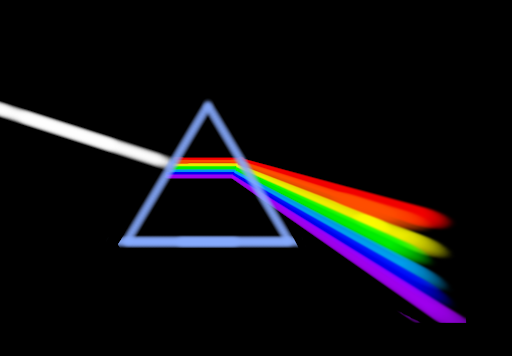Nature of Light

Once upon a time, people were curious about how light works, how we see different colours in the sky, and how some objects appear bent in water. Every day in the past, the ancient Egyptians believed that light was the activity of their god Ra seeing. Although others thought different things. One day the Dutch mathematician-astronomer Christiaan Huygens formulated the first detailed wave theory of light, while Gilbert Lewis discovered photons. Because of that, most of us now understand how light works and people are able to create some electronic devices. Finally, most of us started using these devices.
What Is The Nature Of Light?
When I was younger, I always asked myself, why are some objects so bright? What exactly is my reflection? Why does the sky appear in different colours at different times of the day? Why do some reflections on water appear to be bent? Back in those days, I didn't know much about how this interesting optical phenomenon works. But nowadays, thanks to the internet and interesting books and articles written by people, I have learnt many things I didn’t know before.
In 1690, Christian Huygens proposed a theory that explained that light is made of waves. However, in 1704 a rival theory was proposed by Sir Isaac Newton. He explained that light is composed of tiny particles or corpuscles emitted by luminous bodies. He combined this theory with his laws of mechanics, and he was able to explain this optical phenomenon.
Light, as we know, is needed for all creatures to see. But what exactly is it? What are its properties? It is a transverse and electromagnetic wave and has the properties of both waves and particles.
The word “wavelength” is used to express the wave or undulating properties of light. It Is the distance travelled by light in one oscillation and is often expressed using a unit called a nanometer. 1 nanometer is equal to 1 billionth of a meter. The flow of these photons is a wave.
As mentioned earlier, light also has the property of particles. The intensity of light depends on the number of particles there are. The brighter the light is, the more particles there are. Light particles are called photons. When light weakens and grows dimmer, the quantity of its signal becomes less, yet the few remaining pulses can be detected, and the size of these individual signals does not decrease. This means light cannot become any smaller and confirms that light has a property of particles.
What is even more interesting about light is its immensely quick speed. Light can travel at the speed of about 300,000 kilometres per second. Light, which is the fastest thing known to us, can only move 0.3 millimetres in a picosecond (trillionth of a second) in a vacuum. When light is in a vacuum, such as outer space, where no matter is present, it travels straightforwardly. However, light reacts in many ways when it comes in contact with water, air, and other objects.
When light strikes matter, a part of it is absorbed into the matter and is transformed into heat energy. If the matter is a transparent material, the light is transmitted through and exits to the outer side of the material.
If the surface of the material is smooth, the light bounces off or reflects off the surface, but if the surface is irregular, it scatters in different directions. Light from the sun reaches the earth after travelling through space, it scatters when striking the various particles and molecules in the atmosphere. Some of this light returns to outer space, where it came from, and the remainder of the light reaches the surface of the earth after travelling through the atmosphere.
The level of scattering of light depends on its wavelength, and of the lights that our eyes can see, blue light is more intensely dispersed or scattered. This is why the sky appears blue to our eyes during the day.
Meanwhile, during sunrise and sunset, the sky can appear orange, pink, or red to our eyes. This is because when the position of the sun is lower, the distance that the light travels through the atmosphere becomes even longer, and the blue light scatters and weakens. And the remaining red or orange light reaches our eyes.
When there is a lake or pond between our eyes and a mountain, the light arriving there from the mountain ‘reflects’ off the surface of the lake or pond. If the surface is calm with no wind and also flat and smooth such as on level surfaces with no irregularities like mirrors and glass, then the angle of the incident light (angle of incidence) and the angle of the light bouncing off the surface (angle of reflection) are equal to each other. This is referred to as specular reflection or mirror reflection.
On the other hand, if the surface is rough or irregular, then the direction of the reflected light varies depending on the position on the surface, resulting in a distorted image of the mountain reflecting on the surface of the water.
Refraction occurs when light travels at different speeds in a different matter, So the light scatters.
Light moves in various directions, so the light waves are constantly striking each other. The phenomenon that occurs when light waves collide with each other is called “interference.” The light from the sun is called a white light beam, but it actually is a mixture of different coloured lights which appear white to our eyes. Using a prism to separate the white light beam allows us to see the various colours of light. This phenomenon is called the “dispersion” of light. In the natural world, water droplets act like a prism then they remain in the air after the rain.
Digital art by: Aishath Malaak Binthi Mahmoodh
In conclusion, light has many unique and important properties. Without light, we wouldn't be able to see. And light has really made an advance in technology.
Reference:
Nature of light-the physics Hypertext book: https://physics.info/light/#:~:text=Light%20is%20a%20transverse%2C%20electromagnetic,can%20travel%20through%20a%20vacuum.
Author Biography
Aishath Malaak Binthi Mahmoodh was born in 2009 in Maldives. She loves to do research on topics that interest her. She is also great at animating and art, both digital and drawn on paper. At school, she has participated in many activities and competitions, such as Athletics, Robotics, science fairs and a school concert. Apart from drawing, she also loves sports such as skating and football.

Cite this article as:
Aishath Malaak Binthi Mahmoodh, Nature Of Light, theCircle Composition, Volume 2, (2022).thecirclecomposition.org/nature-of-light-2/
